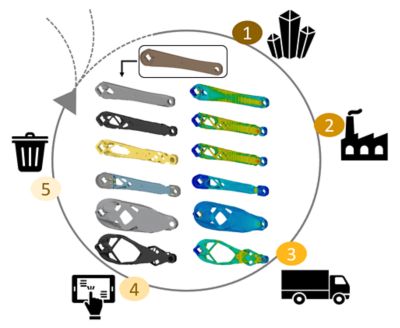Case Study: Bike Crank Design Optimization – Towards Sustainable Product Design
In pursuit of realizing a responsible production (United Nations Sustainable Development Goal No.12) of goods, sustainability considerations are becoming indispensable in an engineer’s decision-making process throughout the product development. This case study presents a sustainable product design methodology, using a bike crank as an example. It is centered around Ansys Granta EduPack and Ansys Discovery, allowing for a concurrent consideration of material candidates (strategic material selection) and designs (FEA-simulation), respectively. Furthermore, it demonstrates means of structurally optimizing designs using topology optimization with the aim of reducing the amount of material required for a bike crank design. Beyond the structural analysis, a streamlined life-cycle-assessment is conducted to elucidate the ecological and economic impact of different material and design choices. In a final trade-off analysis, light is shed on key performance indices to make informed and responsible decisions and discusses additional consideration for critically assessing and improving material and design choices.
Learning Outcomes
- Understanding sustainable product design methodology
- Ability to use Ansys Granta EduPack to carry out strategic material selection
- Ability to use Ansys Discovery to simulate the bike crank and carry out topology optimization
- Awareness of the importance of life cycle assessment to understand the ecological and economic impact of different material and design choices
Applicable Courses for Use
Product Design, Structural Analysis, Topology Optimization, Sustainability, Sustainable Product Design
Downloadable Content
- Case study report
- Simulation files












